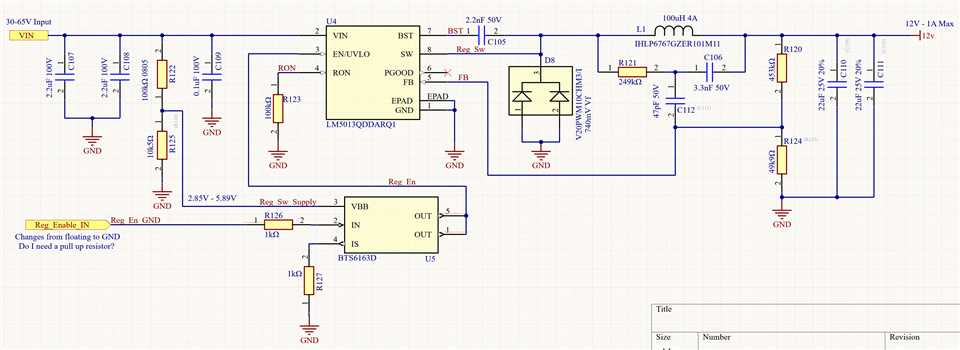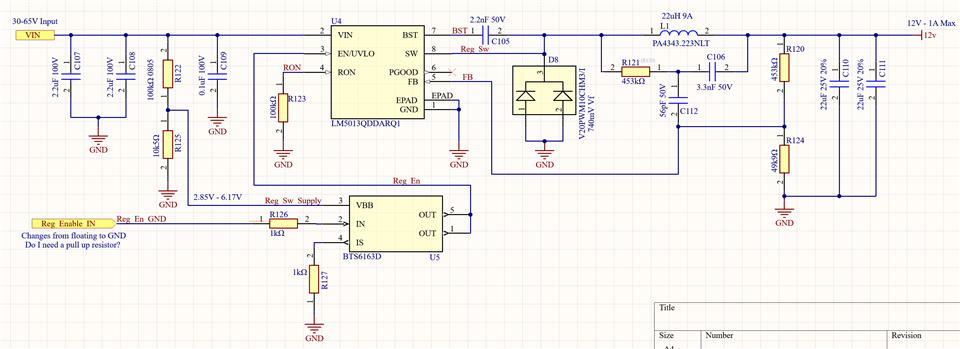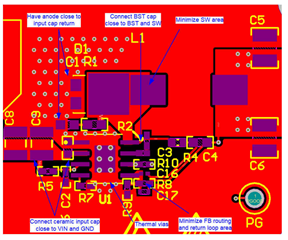Hello,
I am planning on using this device for stepping down my 30-65V battery stack to 12V with no more than 1A. Does this look ok? I have chosen a lower current rating inductor compared to WEBENCH but it is still 4A and I am only using 1A. My plan is to have a switch for the enable pin, as this goes through a voltage divider am I correct in the voltage values I have noted on the schematic?

Many thanks!









